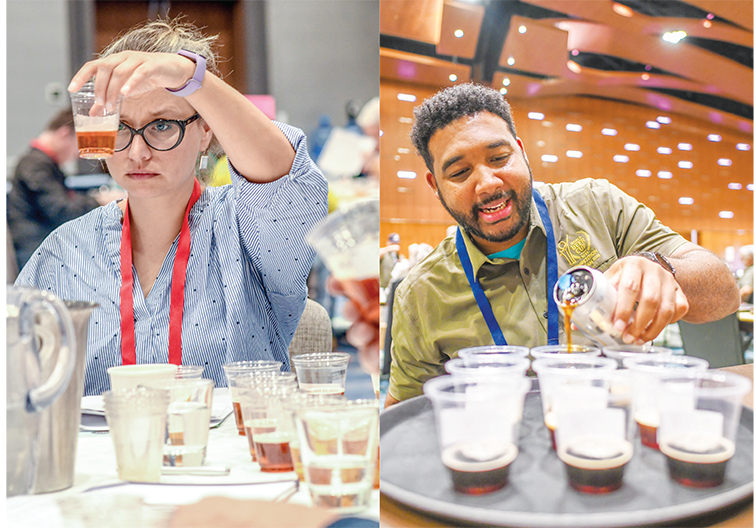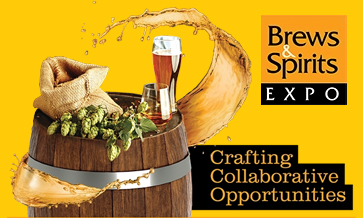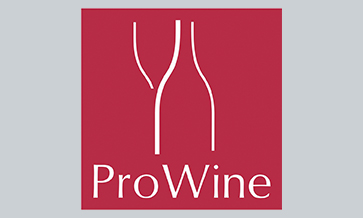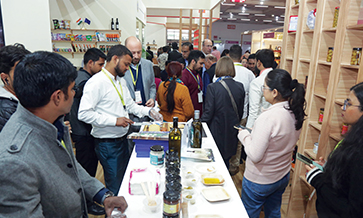There are many international beer competitions but none so big as the World Beer Cup (WBC), organised by the Brewers Association, the not-for-profit trade association representing small and independent American craft breweries
The WBC this year attracted 10,213 entries from 2,376 breweries and 51 countries. Established in 1996 and now held annually, it is the largest and most competitive beer competition in the world.
A panel of 272 judges from 26 countries evaluated entries over 18 sessions and 9 days with the third and final phase taking place in Nashville, Tennessee, alongside the Craft Brewers’ Conference and BrewExpo America.
Having recently judged my first World Beer Cup I was blown away by the integrity of the competition, the efficiency of the operation and the professionalism of my fellow judges.
Co-ordinating more than 10,000 entries is a major logistical and organisational challenge but the Brewers Association, with new competition director Chris Williams competently at the helm, pulled it off with aplomb. Here’s how it’s done…
Attention to detail
The behind-the-scenes operation is a well-oiled machine that runs like clockwork, thanks to an army of highly efficient volunteers from the local beer enthusiast community –except for those from local breweries in case integrity is compromised.
Each judging table is assigned a table captain and two stewards, who appear like magic exactly when the next samples are needed. They’re responsible for pouring the beer into tasting cups, labelling them correctly, delivering them to the judges’ tables at the appropriate time, and returning the entry summary sheets to the organisers. They check and re-check entries to ensure correct representation.
The attention to detail is an impressive hallmark of the competition. Judging is 100% blind, and a beer that makes it through multiple rounds is never given the same entry number twice to maintain anonymity.
Judges are advised to wash clothes in unscented washing powder ahead of arrival and use neutral soap, hand-wash, deodorant, etc. In fact, judges should smell of nothing!
Phones are banned at the judging table and advice is even given regarding media requests and how to handle them. More delicate beer styles that might degrade rapidly are judged first during Phase-1 and Phase-2 of the competition in Colorado in April to ensure overseas entries are not disadvantaged.
Judging process
The World Beer Cup is judged according to the Brewers Association Style Guidelines, of which every judge has a copy. These are beer-style descriptions and reference points for brewers and competition organisers.
Over the course of each session (one per morning and afternoon) each judge may taste three different flights of up to 11 or 12 beers per flight. The best three beers from each flight are pushed forward to the next round.
Detailed feedback is given by every judge for all first-round beers, as well as an indication of a beer’s relative strength in the flight. After the competition, all forms are sent to entrants with the judges’ feedback giving valuable insights for improvement.
For many brewers, this feedback is a key reason for entering the WBC, regardless of whether their beer wins or not.
Amanda Benson, sensory analyst at Deschutes Brewery from Bend, Oregon, who judged this year’s WBC says: “Winning is important – we like to win medals, but it’s not the whole thing. We enter the competition because we know we get the feedback before the next one, so we can make tweaks to either the beer or the category before we enter.”
Depending on the size of the category a successful beer may go through many rounds until it reaches the final. American IPA was the biggest category in this year’s WBC with 412 entries, and the winning beer underwent five rounds of judging before being awarded gold.
The judges
The judges themselves are hugely impressive. They comprise internationally recognised brewers, sensory analysts, beer sommeliers and brewing consultants from all over the world. All are experts in their fields, some have judged many World Beer Cups before, while others are first-time judges.
Approximately 12-15% of new judges are introduced every year to keep the panel fresh and introduce new perspectives. Being selected as a World Beer Cup judge is a feat in itself.
Potential judges apply online and require three references testifying to their sensory abilities, overall knowledge of beer and beer styles and general demeanour. They may wait at least 3 years to be considered, such is the interest in gaining a coveted place on the judging panel!
Chris Williams hand-picks the final list of judges, ensuring no brewer who has entered beers into the competition judges his/her beer. This year 105 of the 272 judges came from outside the USA.
At times, the room was completely silent as judges concentrated on analysing and evaluating the beers in front of them. Robust discussion only takes place once all judges at the table have completed their evaluation. The discussion is led by a designated lead judge.
Winners were announced at an awards ceremony on the final night of the Craft Brewers’ Conference. The passion and pride on the winners’ faces as they bounded on stage to collect their awards was a sight to behold, and the excitement was electric!
WBC awarded gold, silver and bronze medals to 307 winners from 103 categories covering 176 different beer styles. Next year’s World Beer Cup and Craft Brewers’ Conference will be held in Las Vegas, 21-24 April 2024. Registration opens in November 2023. For more information, write to Lotte Peplow at lotte@brewersassociation.org.
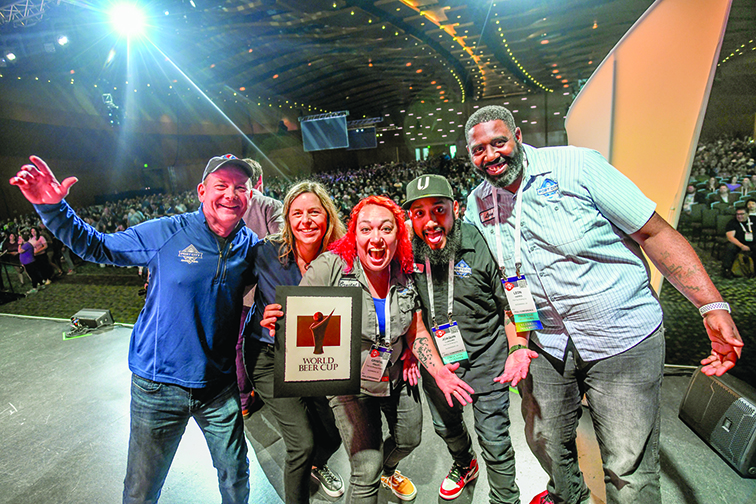
WBC 2023 awarded gold, silver and bronze medals to 307 winners from 103 categories, covering 176 different beer styles.











